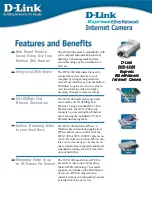
69
Chapter 9: Data Correction
This chapter discusses the methods incorporated by NIRvana HS for correcting data.
For each individual camera, specific correction data are determined during the
manufacturing process. All necessary correction data are stored within the camera's
non-volatile flash memory (NVRAM.) During camera start-up, the available correction
data are copied from the flash memory onto the correction data memory for real time
access. The correction data transfer is synchronized with the transfer of image data
from the sensor. A correction module may also write back to the correction data
memory, depending on its functionality. The specific image correction modules are
described in the following sections.
9.1
Non-Uniformity Correction (NUC): Gain and Offset
Each pixel of an InGaAs sensor includes two sources of signal non-uniformity:
•
Dark Signal Non-Uniformity (DSNU);
This is the inherent level of dark charge associated with all sensor pixels.
•
Photo Response Non-Uniformity (PRNU);
This is the sensitivity of each pixel to light.
The interaction and combination of these two sources yields an underlying,
sensor-specific, static pattern which can be identified/characterized, and then
compensated for using Non-Uniformity Correction techniques.
The NIRvana HS camera is factory calibrated at a default temperature for all speeds and
gains to perform column-by-column gain and offset correction. NUC removes the
vertical fixed-pattern in an image due to column amplifier differences. If improved
pixel-by-pixel correction is desired, refer to
Section 9.2, Background Subtraction
Section 9.3, Flatfield Correction
9.2
Background Subtraction
To compensate for remaining non-uniformity, background subtraction can be used to
remove or reduce the impact of fixed pattern noise when acquiring data. The technique
requires that a live background image be acquired, stored, and selected as the
background file to be used in background-subtracted data acquisition. This
background image is subtracted from the live image to reduce the fixed pattern noise.
NOTE:
The background image should be acquired with the
NIRvana HS at cooling set point, the lens cover installed/in
place, and little or no ambient light in the area. All camera
configuration settings should be the same as for the
experiment to be performed.
Background Subtraction is enabled and configured on the Online Corrections expander
within LightField. The Background Reference Image is also acquired from within this
same expander. See
Содержание Princeton Instruments NIRvana HS
Страница 1: ...www princetoninstruments com NIRvana HS System Manual 4411 0169 Issue 1 0 January 8 2020 ...
Страница 3: ...Issue 1 0 NIRvana HS System Manual 3 This page is intentionally blank ...
Страница 4: ...4 NIRvana HS System Manual Issue 1 0 ...
Страница 10: ...10 NIRvana HS System Manual Issue 1 0 ...
Страница 26: ...26 NIRvana HS System Manual Issue 1 0 This page is intentionally blank ...
Страница 34: ...34 NIRvana HS System Manual Issue 1 0 ...
Страница 52: ...52 NIRvana HS System Manual Issue 1 0 This page is intentionally blank ...
Страница 72: ...72 NIRvana HS System Manual Issue 1 0 This page is intentionally blank ...
Страница 90: ...90 NIRvana HS System Manual Issue 1 0 Figure D 1 Hg Spectrum NIRvana HS 1 7 SP 2500 4411 0169_0047 ...
Страница 91: ...Appendix D Calibration Charts 91 Figure D 2 Ne Ar Spectrum NIRvana HS 1 7 SP 2500 4411 0169_0048 ...
Страница 92: ...92 NIRvana HS System Manual Issue 1 0 This page is intentionally blank ...
Страница 101: ...This page is intentionally blank ...
Страница 106: ......
















































